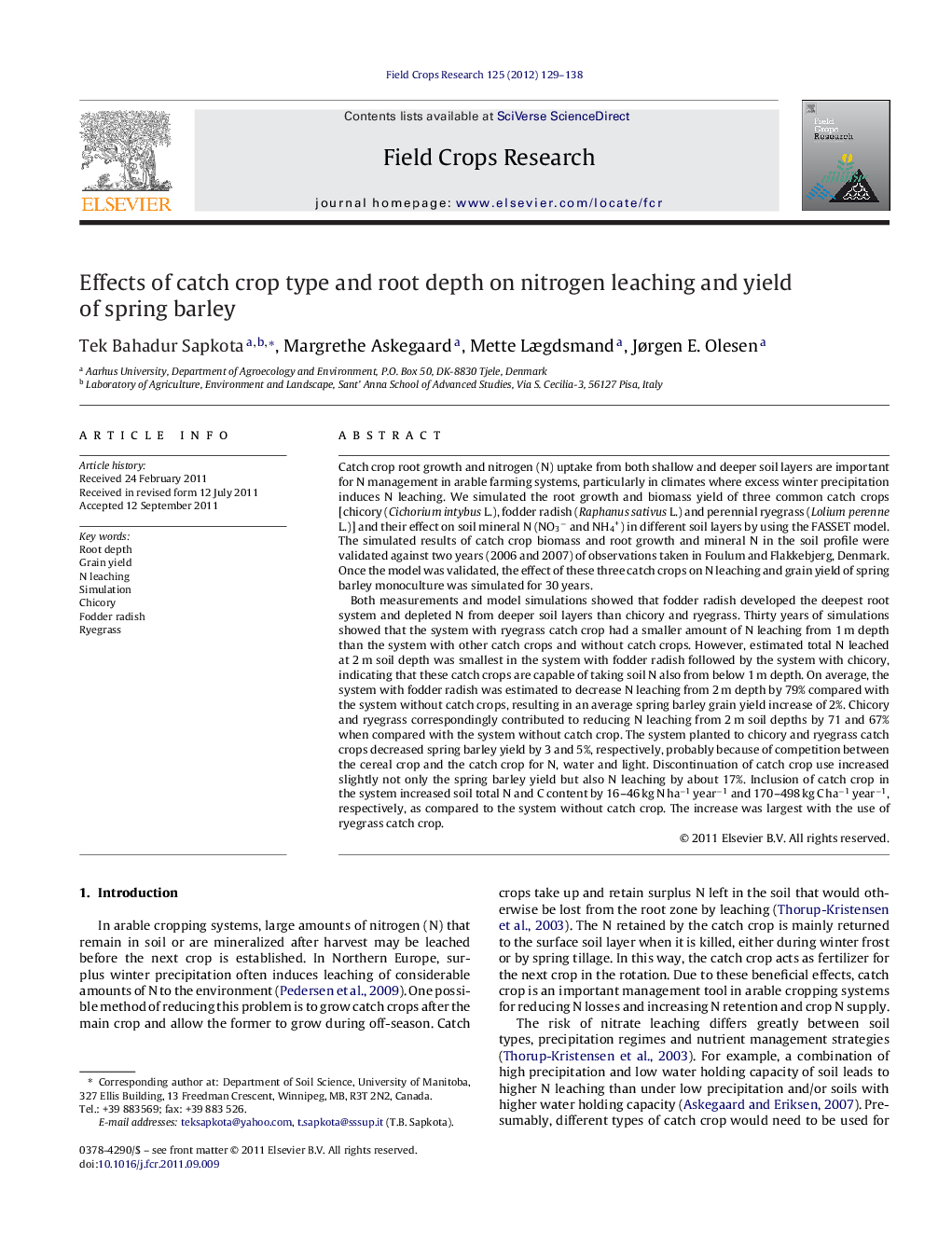| Article ID | Journal | Published Year | Pages | File Type |
|---|---|---|---|---|
| 4510518 | Field Crops Research | 2012 | 10 Pages |
Catch crop root growth and nitrogen (N) uptake from both shallow and deeper soil layers are important for N management in arable farming systems, particularly in climates where excess winter precipitation induces N leaching. We simulated the root growth and biomass yield of three common catch crops [chicory (Cichorium intybus L.), fodder radish (Raphanus sativus L.) and perennial ryegrass (Lolium perenne L.)] and their effect on soil mineral N (NO3− and NH4+) in different soil layers by using the FASSET model. The simulated results of catch crop biomass and root growth and mineral N in the soil profile were validated against two years (2006 and 2007) of observations taken in Foulum and Flakkebjerg, Denmark. Once the model was validated, the effect of these three catch crops on N leaching and grain yield of spring barley monoculture was simulated for 30 years.Both measurements and model simulations showed that fodder radish developed the deepest root system and depleted N from deeper soil layers than chicory and ryegrass. Thirty years of simulations showed that the system with ryegrass catch crop had a smaller amount of N leaching from 1 m depth than the system with other catch crops and without catch crops. However, estimated total N leached at 2 m soil depth was smallest in the system with fodder radish followed by the system with chicory, indicating that these catch crops are capable of taking soil N also from below 1 m depth. On average, the system with fodder radish was estimated to decrease N leaching from 2 m depth by 79% compared with the system without catch crops, resulting in an average spring barley grain yield increase of 2%. Chicory and ryegrass correspondingly contributed to reducing N leaching from 2 m soil depths by 71 and 67% when compared with the system without catch crop. The system planted to chicory and ryegrass catch crops decreased spring barley yield by 3 and 5%, respectively, probably because of competition between the cereal crop and the catch crop for N, water and light. Discontinuation of catch crop use increased slightly not only the spring barley yield but also N leaching by about 17%. Inclusion of catch crop in the system increased soil total N and C content by 16–46 kg N ha−1 year−1 and 170–498 kg C ha−1 year−1, respectively, as compared to the system without catch crop. The increase was largest with the use of ryegrass catch crop.
► Effect of three catch crops on N leaching and spring barley yield was studied. ► Fodder radish decreased N leaching by 79% and increased spring Barley yield by 2% than the system without catch crops. ► Chicory and ryegrass reduced N leaching by 71 and 67% and also decreased spring barley yield by 3 and 5%, respectively. ► Termination of catch crop use increased spring barley yield but also increased N leaching by 17%.
